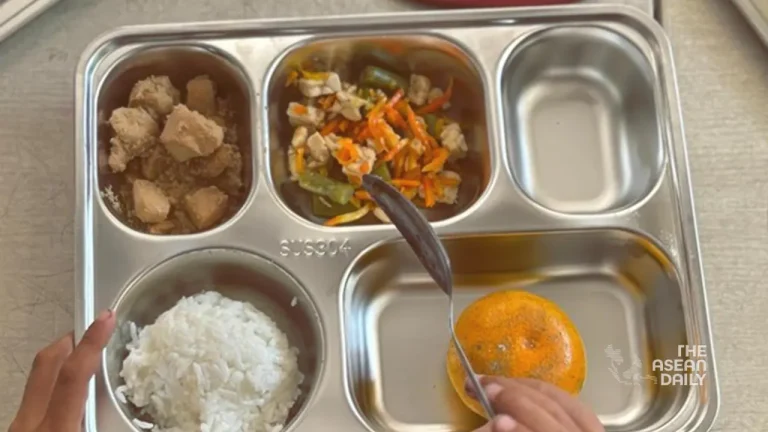6-1-2025 (JAKARTA) In a landmark initiative aimed at tackling hunger and malnutrition, Indonesia launched its ambitious free meal programme Monday, marking the first phase of President Prabowo Subianto’s cornerstone campaign promise that aims to feed over 82 million citizens by 2029.
The programme commenced modestly, with 190 kitchens distributing meals to 570,000 beneficiaries across more than 20 provinces, primarily targeting schoolchildren and expectant mothers. The subdued rollout belied the massive scale of what will become one of the world’s largest food distribution schemes.
At West Jakarta’s elementary schools, pupils received their first government-provided meals consisting of rice, fried chicken, tofu, beans and fruit. “It’s transformed our morning routine completely,” remarked Hana Yohana, mother of a first-year student. “The daily challenge of preparing breakfast is now one less worry for parents like me.”
The initiative, whilst revolutionary in scope, has sparked debate among economic analysts concerned about its substantial price tag. The first-year operations alone are projected to cost 71 trillion rupiah ($4.39 billion), with the programme expected to reach 15 million beneficiaries by year’s end. The five-year estimated cost of $28 billion has raised questions about potential impact on Indonesia’s fiscal stability.
President Subianto has robustly defended the scheme, positioning it as a strategic investment in the nation’s future. Speaking last month, he emphasised its dual role in combating childhood malnutrition whilst stimulating regional economic growth.
The logistics of the operation involve unprecedented cooperation between civil authorities and military personnel, who share responsibility for meal preparation and distribution. Government spokesperson Dedek Prayudi confirmed that the programme will expand gradually, targeting 3 million recipients by March, with further increases planned throughout the year.
To support the initiative’s dairy component, Indonesia has begun importing cattle from Australia, though Prayudi noted that milk distribution would not be daily. The government plans to systematically scale up operations, with the ultimate goal of reaching nearly 30% of Indonesia’s 280 million population within five years.




